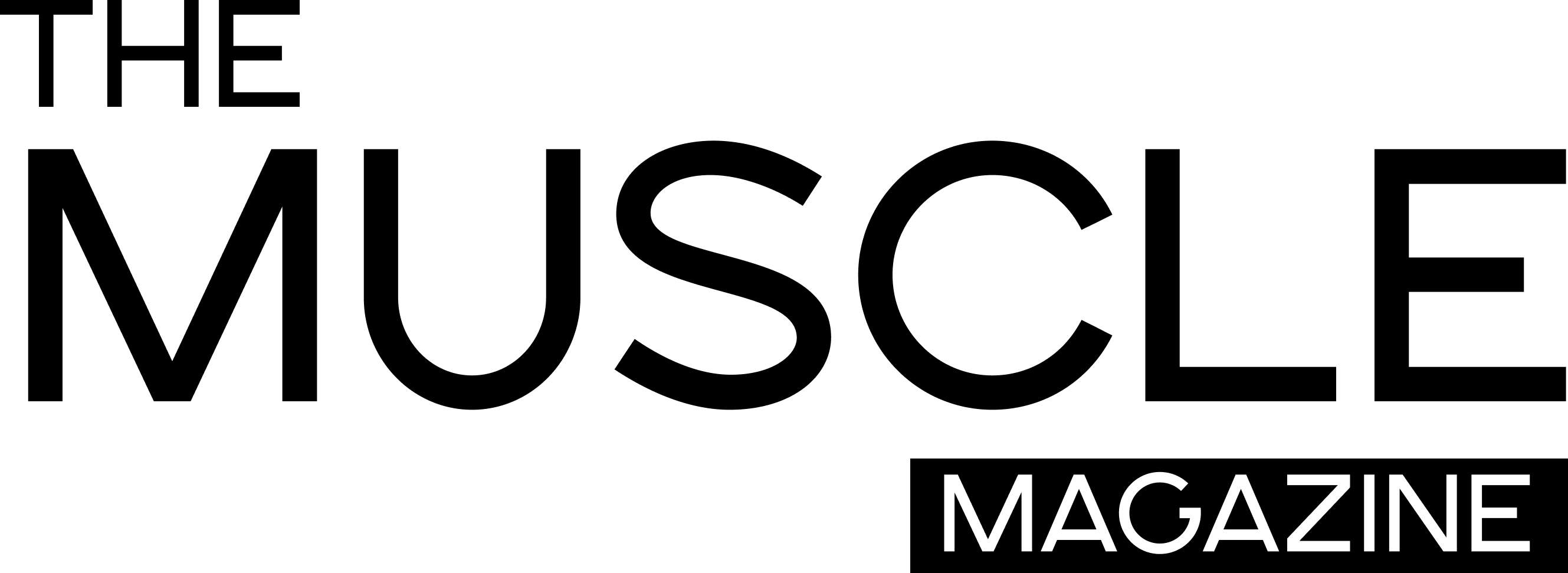Previously, I wrote an article titled “Sarcopenia & Amino Acids” for the September 2017 issue of Vitamin Retailer. In it, I discussed the science behind a specific, patented blend of essential amino acids (EAAs) known as Reginator, with a focus on sarcopenia (age-related muscle loss). I also reviewed research on EAAs’ impact on younger subjects wanting to build muscle. Since that time, there have been additional studies that have not yet been published, but about which I was able to obtain the data. In the current article, I’m going to share that information with you. However, before jumping into the additional studies, I’m first going to provide a brief review of the previous studies I first presented in 2017.
Review of Previous Research
A specific group of essential amino acids has been shown to have significant benefits in promoting muscle repair. This blend was originally developed at the University of Arkansas to assist burn victims maintain muscle mass and strength while inactive and was also used to help astronauts at NASA preserve muscle function and strength while on deep space missions. This EAA blend (Reginator) is patented by the University of Arkansas.
Here are the highlights from my previous article:

• In 1998,1 oral administration of the EEA blend in healthy young (30 +/- two years) and healthy elderly (71 +/- two years) subjects found that muscle protein anabolism was likewise stimulated in the elderly as well as in the young (P<0.01).
• In 2003,2 oral administration of the EEA blend young (34 +/- four years) and elderly (67 +/- two years) individuals also acutely stimulated muscle protein synthesis (P<0.05).
• In 2004,3 6 g of EEAs before weight training increased muscle protein synthesis by almost 600 percent and after training by 400 percent in young subjects.
• In 2006,4 EAA supplementation stimulated muscle protein synthesis significantly greater than whey protein supplementation in healthy elderly individuals (P<0.05).
Now, onto the newer material.
Muscle Protein Synthesis and Whole-body Protein Turnover
A randomized, double-blind crossover study5 consisting of two, 5-D energy deficits (i.e., insufficient caloric intake) was conducted to determine the effects of standard and high EAA ingestion on mixed muscle protein synthesis (MPS) and whole-body protein turnover in 19 men in the Army Special Forces. Following each energy deficit, mixed MPS and whole-body protein synthesis (PS), breakdown (PB), and net balance (NET) were determined at rest and post-resistance exercise (RE). Circulating EAA were measured. Beverages provided standard (0.1 g/kg, 7.87 ± 0.87 g) or high (0.3 g/kg, 23.5 ± 2.54 g) EAA were consumed post-RE. This is equivalent to 7.5 g and 22.5 g of EAAs, respectively. Results were that both standard and high EAA doses increased postprandial MPS compared to the post-absorptive state, but there was no significant difference between the two EAA doses. The high EAA dose led to a greater increase in whole-body protein synthesis and a more positive net balance compared to the standard dose. Higher circulating EAA concentrations were observed with the high EAA dose compared to the standard dose. In conclusion, these data demonstrate that high compared to standard EAA ingestion enhances whole-body protein status during underfeeding. However, the effects of consuming high and standard EAA on mixed MPS are the same during energy deficit.
Muscle Characteristics and Whole-body Protein Turnover in Overweight and Obese Adults
The purpose of this eight-week randomized, controlled study6 was to compare the independent and combined effects of high-intensity interval training (HIIT) and essential amino acids (EAA) on lean mass, muscle characteristics of the quadriceps, and 24-hr whole-body protein turnover (WBPT) in 66 overweight and obese adults (50 percent female; Age: 36.7 ± 6.0 years; percent body fat: 36.0 ± 7.8 percent). Subjects were assigned to: (a) HIIT, two days/week; (b) EAA supplementation, 3.6 g twice daily; (c) HIIT + EAA; or (d) control. At baseline, four and eight weeks, total body, thigh lean mass (LM) and muscle characteristics were measured. In a subsample, changes in WBPT were measured. Results were that HIIT and HIIT + EAA improved thigh LM (+0.17 ± 0.05 kg; +0.22 ± 0.05 kg) and vastus lateralis (largest muscle in the thigh) cross-sectional area (+2.73 ± 0.52 cm2; +2.64 ± 0.53 cm2), and volume (+54.50 ± 11.69 cm3; +62.39 ± 12.05 cm3. Protein synthesis, breakdown, and flux were greater with HIIT + EAA and EAA compared to HIIT (p < .05). Sex differences were minimal. Compared to women, men tended to respond more to HIIT, with or without EAA. For women, responses were greater with HIIT + EAA than HIIT. In overweight and obese adults, eight weeks of HIIT, with or without EAA, improved thigh LM size and quality. In conclusion, EAA enhanced muscular adaptation via increases in protein turnover, supporting greater improvements in muscular size and quality.
Improved Muscle Protein Synthesis Achieved With 3.6 G Of EAA in Elderly
To determine if a lower dose of the EAA blend would stimulate muscle protein synthesis in older volunteers, a study7 was conducted with 23 subjects. Eleven subjects (67 ± 6 (SD) years; 5M: 6F) received 3.6 g and 12 subjects (68 ± five years; 8M: 4F) received 10.8 g of the EAA formula. All subjects were studied for two hours in the fasted state and three hours after EAA ingestion. Muscle biopsies were taken at three, five and eight hours after initiation of tracer infusion to determine fractional rate of protein synthesis (FSR). Blood draw was obtained between hours five and eight to calculate the area under the curve (AUC) response for total EAA’s. Results were that a significant main effect of time (p ≤ 0.001) was observed for muscle FSR with both the 3.6 g (0.0568 ± 0.0338 percent/hour) and the 10.8g (0.0691 ± 0.0412 percent/hour) increasing from the fasted period to the fed period. However, the increase in the muscle FSR response was not significantly different between the two conditions (p = 0.921). The EAA AUC was significantly greater following the 10.8 g (272.7 mol/L/min) as compared to the 3.6 g (185.4 mol/L/min). In conclusion, despite a significantly higher EAA AUC the muscle FSR response was not significantly enhanced by 10.8g as compared to 3.6 g of free-form EAA’s. Therefore, ingestion of 3.6 g of the EAA blend appears to be a viable way to maximize protein synthesis in elderly subjects.
Improved Muscle Strength Recovery Following Hip Replacement Surgery
This eight-week, prospective, randomized clinical trial8 was conducted to investigate the effects of increased nitrogen intake, via amino acid supplementation, on strength and functional recovery after total hip arthroplasty (THA), aka, hip replacement surgery. THA patients were randomly assigned to receive usual care (UC; eight subjects, age range 45-65 years) or 15 g of the EAA blend three times per day (EAA; eight subjects, age range 45-68 years) for eight weeks post-surgery. Leg strength (maximal voluntary contraction of the quadriceps) was measured by hand-held dynamometer, and function by four-meter walk and a chair stand test pre-surgery, two- and eight-weeks post-surgery. Results were that improvement in leg strength was greater in the EAA group, as was the rate of improvement from weeks two to eight post-surgery. Improved strength was realized without an increase in lean mass. Both groups improved chair stand and four-meter walk times. EAA supplementation increased total protein intake by 0.6g/kg/d (EAA 1.7 g/kg/d vs UC 1.1 g/kg/d). In conclusion, increased nitrogen intake via EAA supplementation improved the rate of recovery of leg muscle strength following THA. Also, EAA group experienced a 35 percent improvement in leg muscle strength from pre-surgical levels and a 64 percent greater recovery compared to the usual care group.
Conclusion
The patented blend of EAAs known as Reginator has been shown to help promote muscle repair, as outlined in my previous article from 2017. Additional data presented in this article demonstrated that the EAA blend also improved muscle protein synthesis and whole-body protein turnover, muscle characteristics and whole-body protein turnover in overweight and obese adults, muscle protein synthesis in elderly with only a 3.6 g dose, and muscle strength recovery following hip replacement surgery.VR
References:
1 Volpi E, Mittendorfer B, Wolf SE, Wolfe RR. Oral amino acids stimulate muscle protein anabolism in the elderly despite higher first-pass splanchnic extraction. Am J Physiol. 1999 Sep;277(3 Pt 1):E513-20.
2 Paddon-Jones D, Sheffield-Moore M, Zhang XJ, Volpi E, Wolf SE, Aarsland A, Ferrando AA, Wolfe RR. Amino acid ingestion improves muscle protein synthesis in the young and elderly. Am J Physiol Endocrinol Metab. 2004 Mar;286(3):E321-8.
3 Børsheim E, Tipton KD, Wolf SE, Wolfe RR. Essential amino acids and muscle protein recovery from resistance exercise. Am J Physiol Endocrinol Metab 2002; 283:E648–E657.
4 Paddon-Jones D, Sheffield-Moore M, Katsanos CS, Zhang XJ, Wolfe RR. Differential stimulation of muscle protein synthesis in elderly humans following isocaloric ingestion of amino acids or whey protein. Exp Gerontol. 2006 Feb;41(2):215-9.
5 Gwin JA, Church DD, Hatch-McChesney A, Howard EE, Carrigan CT, Murphy NE, Wilson MA, Margolis LM, Carbone JW, Wolfe RR, Ferrando AA, Pasiakos SM. Effects of high versus standard essential amino acid intakes on whole-body protein turnover and mixed muscle protein synthesis during energy deficit: A randomized, crossover study. Clin Nutr. 2021 Mar;40(3):767-777.
6 Hirsch KR, Greenwalt CE, Saylor HE, Gould LM, Harrison CH, Brewer GJ, Blue MNM, Ferrando AA, Huffman KM, Mayer-Davis EJ, Ryan ED, Smith-Ryan AE. High-intensity interval training and essential amino acid supplementation: Effects on muscle characteristics and whole-body protein turnover. Physiol Rep. 2021 Jan;9(1):e14655.
7 Church D.D., Ferrando A.A., Wolfe R.R. Improved Muscle Protein Synthesis is Achieved with 3.6 g of Free Form Essential Amino Acid Ingestion in Elderly. J. Int. Soc. Sports Nutr. 2019;17:13.
8 Ferrando AA, Bamman MM, Schultzer SE, et al. Increase nitrogen intake following hip arthroplasty expedites muscle strength recovery. Journal of Aging Research & Clinical Practice; 2013; 2)4): 369-75.
Gene Bruno, MS, MHS, Professor Emiritus of Nutraceutical Science, is a nutritionist, herbalist, writer and educator. For more than 40 years he has educated and trained natural product retailers and health care professionals, has researched and formulated natural products for dozens of dietary supplement companies, and has written articles on nutrition, herbal medicine, nutraceuticals and integrative health issues for trade, consumer magazines and peer-reviewed publications. He can be reached at eugenejbruno@gmail.com.





